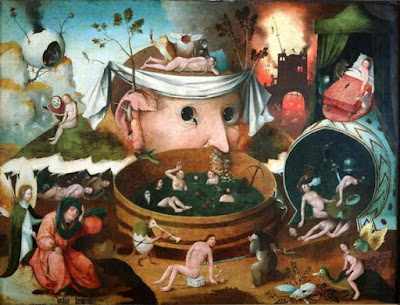Just One Thing
Simple practices for more happiness, love, and wisdom
|
What is an open heart?
|
The Practice:
Put no one out of your heart.
|
We all know people who are, ah, . . . challenging. It could be a critical parent, a bossy supervisor, a relative who has you walking on eggshells, a nice but flaky friend, a co-worker who just doesn't like you, a partner who won't keep his or her agreements, or a politician you dislike. Right now I'm thinking of a neighbor who refused to pay his share of a fence between us.
As Jean-Paul Sartre put it: "Hell is other people." Sure, that's overstated. But still, most of a person's hurts, disappointments, and irritations typically arise in reactions to other people. Ironically, in order for good relationships to be so nurturing to us as human beings - who have evolved to be the most intimately relational animals on the planet - you must be so linked to others that some of them can really rattle you! So what can you do? Let's suppose you've tried to make things better - such as taking the high road yourself and perhaps also trying to talk things out, pin down reasonable agreements, set boundaries, etc. - but the results have been partial or nonexistent. At this point, it's natural to close off to the other person, often accompanied by feelings of apprehension, resentment, or disdain. While the brain definitely evolved to care about "us," it also evolved to separate from, fear, exploit, and attack "them" - and those ancient, neural mechanisms can quickly grab hold of you. But what are the results? Closing off doesn't feel good. It makes your heart heavy and contracted. And it primes your brain to be more tense and reactive, which could get you into trouble, plus trigger the other person to act worse than ever. Sometimes you do have to hang up the phone, block someone on Facebook, turn the channel on TV, or stay at a motel when visiting relatives. Sometimes you have to put someone out of your business, workgroup, holiday party list - or bed. In extreme situations such as abuse, it may feel necessary to distance yourself utterly from another person for awhile or forever; take care of yourself in such situations, and listen to that inner knowing about what's best for you. But in general: You never have to put anyone out of your heart. |
When your heart is open, what's that feel like? Physically, in your chest - like warmth and relaxation - and in your body altogether. Emotionally - such as empathy, compassion, and an even keel. Mentally - like keeping things in perspective, and wishing others well.
Feel the strength in being openhearted, wholehearted. Be not afraid, and be of good heart. Paradoxically, the most open person in a relationship is usually the strongest one. Get a sense of your heart being expansive and inclusive, like the sky. The sky stays open to all clouds, and it isn't harmed by even the stormiest ones. Keeping your heart open makes it harder for others to upset you. Notice that an open heart still allows for clarity about what works for you and what doesn't, as well as firmness, boundaries, and straight talk. Mahatma Gandhi, Nelson Mandela, and the Dalai Lama are famous for keeping their hearts open while also being very effective. Seeing all this, make a commitment to an open heart. In this light, be mindful of what it feels like - physically, emotionally, mentally - to have your heart closed to a particular person. Be aware of the seemingly good reasons the reactive brain/mind throws up to justify this. Then ask yourself, given the realities of this challenging person, what would have been a better path for you? For example, maybe you should have gotten more support from others or been more self-nurturing, so you wouldn't have been as affected. Or spoken up sooner to try to prevent things from getting out of hand. Or managed your internal reactions more skillfully. Maybe you've done some things yourself to prompt the other person to be difficult. Whatever these lessons are, there's no praise or blame here, just good learning for you. And now, if you're willing, explore opening your heart again to this person. Life's been hard to him or her, too. Nothing might change in your behavior or in the nature of the relationship. Nonetheless, you'll feel different - and better. Last, do not put yourself out of your heart. If you knew you as another person, wouldn't you want to hold that person in your heart? |
Just one thing that could change your life.
(© Rick Hanson, 2016)
|






























